The Toyota Harrier has just entered its fourth iterative life cycle, and as a way of celebrating the launch of the new Harrier, we figured, why not take a brief stroll down memory lane to take a look at the past three generations of the SUV?
Now, the Harrier didn’t quite start out as a standalone Toyota model. Life for the upscale SUV began when executives in Toyota Motor Corporation recognised the need for a luxury SUV in the early 90s to be parked under its Lexus brand, and shortly after the SLV Concept (Sport Luxury Vehicle) was shown in 1997, Lexus launched the first-generation RX, which was built in Kyushu, Japan.
As a matter of fact, at the time the RX debuted, premium SUVs like the Mercedes-Benz ML and BMW X5 weren’t even a thing. Porsche didn’t introduce the Cayenne until 2003, so Lexus was quite literally ahead of its time.
UPDATE: The new Toyota Harrier will be launched in Malaysia very soon. Watch this space!
In just five short years, Lexus sold over 370,000 units of the RX, easily making it the company’s best-selling model at the time. In true Lexus fashion, the engineers focused on interior comfort and safety, which are the two mainstays in the company’s longstanding car-making ethos.
However, when the RX started going on sale, the Lexus brand hadn’t made its formal entry into the Japanese market, so it was sold there as the Toyota Harrier. It was named after the eastern marsh harrier, a bird commonly found in Hokkaido. A stylised profile of the golden black bird also became the car’s distinct badge, and it didn’t take long for Harrier/RX’s popularity to skyrocket in the grey market.
By the time the second-generation XU30 Harrier/RX debuted in 2003, it had already become a sensation. The new car was bigger, better equipped, and donned a design that really stood the test of time. Granted, it wasn’t the most aerodynamically efficient car with a drag coefficient of 0.35 (the first-gen was 0.36), but so were other rivals at the time.
In the mid-2000s, not many SUVs were built to match the Harrier/RX, and demand for it in the grey market was exceptional. The second-gen SUV also featured Adaptive Front-lighting System (AFS) with swivel headlights and height-adjustable air suspension, and in 2005 Lexus introduced the RX 400h, which it claims was the first production premium hybrid SUV. In the same year, Lexus officially entered the Japanese market, thus ending the Harrier-RX parallelisation.
In 2008, Lexus unveiled its third-generation RX, and it adopted the new AL10 model code. In terms of styling, there’s a clear evolutionary transition from its predecessor, albeit designed with the new L-finesse design language. As for the Toyota Harrier, a successor wouldn’t arrive until 2013, so sales of the second-gen XU30 went on until 2013 – a full 10-year cycle.
While the RX continued using the Toyota K platform, the third-generation XU60 Harrier adopted the slightly smaller Toyota MC platform, which sits below the K platform. Both utilise a transverse front engine, front-wheel drive layout (with optional all-wheel drive), and the MC platform had underpinned dozens of Toyota models from the Prius to the Alphard, including the Lexus LM!
Like the RX, the XU60 Harrier was also designed using the L-finesse philosophy, and both share subtle styling similarities such as the high shoulder line and window surrounds. Toyota also attempted to make the Harrier more youthful in appearance, hence the squinted headlights and a generally sportier styling.
Despite being independent from the Lexus RX, Toyota continued to position the Harrier as a premium offering, and much of what was loved before had been retained (like the harrier badge) and improved upon. But because it no longer had ties with the RX, the XU60 Harrier settled for the smaller 2.0 litre four-cylinder engine, whereas the past two generations had bigger V6 engines to choose from.
It was also a landmark moment when Toyota started selling the SUV through official channels in markets outside of Japan. One of those markets was Malaysia, and the third-generation Harrier arrived as a facelift model in early 2018.
The Harrier became an instant hit. The wait list for the 2.0T Luxury variant (pictured above, priced at RM260k) stretched to a year, and the 8AR-FTS 2.0 litre turbocharged powertrain one-upped every offering the grey market had in stock (the pre-facelift model didn’t come with the 2.0T engine).
Besides that, the kit list was plenty generous, with triple-projector LED headlights with sequential indicators, LED fog lamps, Nappa leather upholstery, height-adjustable powered tailgate, panoramic sunroof, ventilated powered front seats, seven airbags, as well as Toyota Safety Sense driver assists with Pre-Collision System (autonomous emergency braking), active cruise control and auto high beam.
After being on sale for seven years, it was time to bow out and make way for the latest fourth-generation XU80 Toyota Harrier. This time, Toyota pushed the envelope and went back to the larger K platform, which had now fallen under the Toyota New Global Architecture (TNGA) family and known as the GA-K platform. Notable models using this platform include the XV70 Toyota Camry, XZ10 Lexus ES, XX50 Toyota Avalon, and XA50 Toyota RAV4.
Measuring 4,740 mm long, 1,855 mm wide and 1,660 mm tall with a wheelbase of 2,690 mm, the five-seater SUV is every bit bigger than the outgoing model. Visually, it’s a lot sportier too, since the overall height was reduced by a staggering 30 mm.
Again, the car’s overall profile appears to draw on the XU60 Harrier, and the characteristic blanked-off upper grille and slim headlights remain present. The headlights feature dual-branched LED DRLs, much like the latest Avalon sedan, and the lower grille is considerably larger, matching the rest of Toyota’s model line-up.
The rear treatment, on the other hand, is quite a departure from the older model. Here, it gets narrower D-pillars, and it now gets full-width tail lights and a reverse-rake tailgate, creating a look that is not unlike the Jaguar F-Pace. It’s certainly a good look, if not more premium than ever before. It even sits on 19-inch wheels!
The Dynamic Force engine line-up is offered here, starting with the 2.0 litre four-cylinder direct-injection engine. This naturally-aspirated mill makes 171 PS at 6,600 rpm and 207 Nm at 4,800 rpm, and is mated to a Direct-Shift CVT. The Harrier Hybrid, on the other hand, gets the new 2.5 litre A25A-FXS four-cylinder engine, which includes a 120 PS/202 Nm front-axle mounted motor.
Its total system output is rated at 218 PS, and CVT is standard. There’s also an E-Four variant of the Harrier Hybrid, which gets an additional rear axle-mounted electric motor producing 54 PS and 121 Nm of torque. The Hybrid E-Four’s total system output is slightly higher at 222 PS, but not much else is known for now. Expect Toyota to release more technical details in the near future.
In any case, both Hybrid versions can be had with a 1,500-watt, 100 V (AC) accessory power outlet, which can also double as a power generator in times of emergency and blackouts.
For features, it gets a Digital Inner Mirror (a first for Toyota), electrochromatic powered sunroof, a 12.3-inch wide touchscreen head unit with Apple CarPlay and Android Auto support, as well as a nine-speaker JBL sound system. Leather upholstery is standard, whereas cabin comfort is enhanced with acoustic windows and more extensive use of vibration-absorbing materials.
On the safety front, the new Harrier gets the latest Toyota Safety Sense suite, which includes a pre-collision safety system with nighttime pedestrian detection, although cyclists can only be detected during the day. There’s also Intelligent Clearance Sonar with Parking Support Brakes, as well as Active Cornering Assist, which helps reduce or prevent understeer in certain driving conditions.
So, what do you think of the Toyota Harrier? If you have any ownership experience you feel like sharing, please do so in the comments section below. We’d love to hear your thoughts!
GALLERY: First-generation XU10 Lexus RX/Toyota Harrier
GALLERY: Second-generation XU30 Lexus RX/Toyota Harrier
GALLERY: Third-generation XU60 Toyota Harrier
GALLERY: Fourth-generation XU80 Toyota Harrier
- ProEXR File Description =Attributes= cameraAperture (float): 35.9999 cameraFNumber (float): 8 cameraFarClip (float): 1e+030 cameraFarRange (float): 1e+018 cameraFocalLength (float): 84 cameraFov (float): 24.1895 cameraNearClip (float): 0 cameraNearRange (float): 0 cameraProjection (int): 0 cameraTargetDistance (float): 200 cameraTransform (m44f): [{2.22045e-016, -0.969648, -0.244504, -623.638}, {-1, -1.66533e-016, -0, 2.68524e-013}, {5.55111e-017, 0.244504, -0.969648, 198.927}, {0, 0, 0, 1}] channels (chlist) compression (compression): Zip dataWindow (box2i): [0, 0, 7999, 7999] displayWindow (box2i): [0, 0, 7999, 7999] lineOrder (lineOrder): Increasing Y name (string): “” pixelAspectRatio (float): 1 screenWindowCenter (v2f): [0, 0] screenWindowWidth (float): 1 type (string): “scanlineimage” vrayInfo/camera (string): “front00_cam” vrayInfo/computername (string): “n202-c” vrayInfo/cpu (string): “INTEL/Model:14,Family:6,Stepping:4,Cache:0” vrayInfo/date (string): “2020/Mar/4” vrayInfo/filename (string): “W:/HXRRXER/_20191225_750B751B/_750B751B_JIZEN_DH_Project/scenes/Front00/Front00_v012_blur.mb” vrayInfo/frame (string): “00001” vrayInfo/h (string): “8000” vrayInfo/mhz (string): “0MHz” vrayInfo/os (string): “Microsoft(tm) Windows(tm), version 6.1, Service Pack 1” vrayInfo/primitives (string): “0” vrayInfo/ram (string): “131040MB” vrayInfo/renderlayer (string): “defaultRenderLayer” vrayInfo/rendertime (string): ” 0h 0m 0.0s” vrayInfo/scenename (string): “Front00_v012_blur” vrayInfo/time (string): “08:44:00” vrayInfo/vmem (string): “8388608MB” vrayInfo/vraycore (string): “3.60.04” vrayInfo/vrayversion (string): “Version of V-Ray for Maya 3.60.03” vrayInfo/w (string): “8000” =Channels= A (float) AO.B (float) AO.G (float) AO.R (float) B (float) ET_Car.B (float) ET_Car.G (float) ET_Car.R (float) G (float) GI.B (float) GI.G (float) GI.R (float) R (float) Z (float) atmosphere.B (float) atmosphere.G (float) atmosphere.R (float) background.B (float) background.G (float) background.R (float) defocusAmount (float) denoiser.B (float) denoiser.G (float) denoiser.R (float) diffuseFilter.B (float) diffuseFilter.G (float) diffuseFilter.R (float) effectsResult.B (float) effectsResult.G (float) effectsResult.R (float) lighting.B (float) lighting.G (float) lighting.R (float) mID01 BodyColor.B (float) mID01 BodyColor.G (float) mID01 BodyColor.R (float) mID04 TireWheel.B (float) mID04 TireWheel.G (float) mID04 TireWheel.R (float) mID07 WindowGlass.B (float) mID07 WindowGlass.G (float) mID07 WindowGlass.R (float) mID10 NumberMekki.B (float) mID10 NumberMekki.G (float) mID10 NumberMekki.R (float) noiseLevel (float) oID01 TireL.B (float) oID01 TireL.G (float) oID01 TireL.R (float) oID04 TireR.B (float) oID04 TireR.G (float) oID04 TireR.R (float) oID07 LampFr.B (float) oID07 LampFr.G (float) oID07 LampFr.R (float) oID10 LampRr.B (float) oID10 LampRr.G (float) oID10 LampRr.R (float) oID13 LampOthers.B (float) oID13 LampOthers.G (float) oID13 LampOthers.R (float) oID16 SideMirror.B (float) oID16 SideMirror.G (float) oID16 SideMirror.R (float) oID19 WindowParts.B (float) oID19 WindowParts.G (float) oID19 WindowParts.R (float) oID22 NumberOthers.B (float) oID22 NumberOthers.G (float) oID22 NumberOthers.R (float) oID25 Sensor_etc.B (float) oID25 Sensor_etc.G (float) oID25 Sensor_etc.R (float) oID28 etc1.B (float) oID28 etc1.G (float) oID28 etc1.R (float) oID31 FrParts1.B (float) oID31 FrParts1.G (float) oID31 FrParts1.R (float) oID34 FrParts2.B (float) oID34 FrParts2.G (float) oID34 FrParts2.R (float) oID37 RrParts.B (float) oID37 RrParts.G (float) oID37 RrParts.R (float) oID40 SiderParts.B (float) oID40 SiderParts.G (float) oID40 SiderParts.R (float) rawShadow.B (float) rawShadow.G (float) rawShadow.R (float) reflect.B (float) reflect.G (float) reflect.R (float) reflectionFilter.B (float) reflectionFilter.G (float) reflectionFilter.R (float) refract.B (float) refract.G (float) refract.R (float) refractionFilter.B (float) refractionFilter.G (float) refractionFilter.R (float) selfIllum.B (float) selfIllum.G (float) selfIllum.R (float) specular.B (float) specular.G (float) specular.R (float) worldNormals.X (float) worldNormals.Y (float) worldNormals.Z (float) worldPositions.X (float) worldPositions.Y (float) worldPositions.Z (float)
Looking to sell your car? Sell it with Carro.

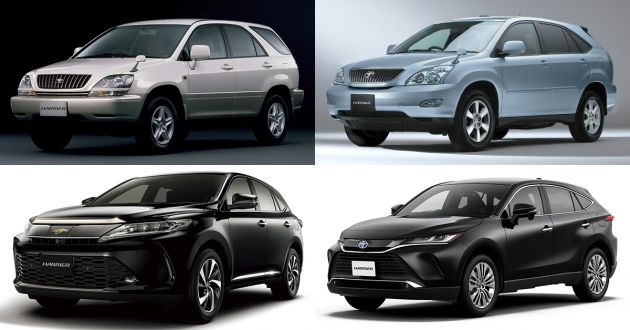













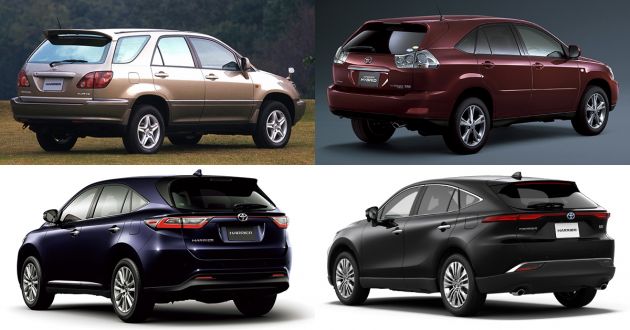
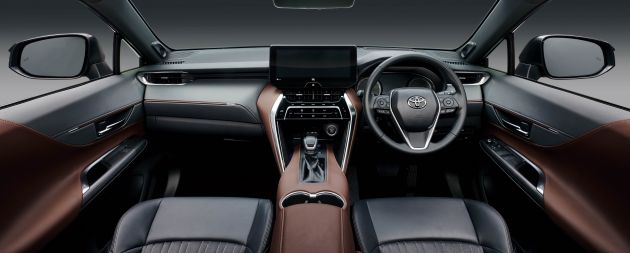
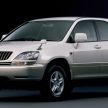

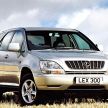
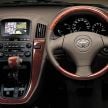

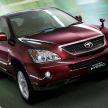
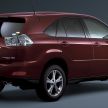
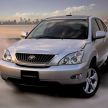
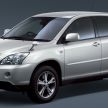
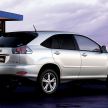

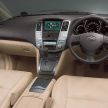
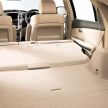
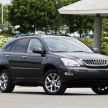
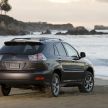
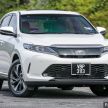
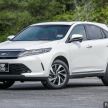
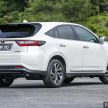
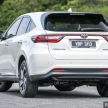
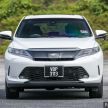
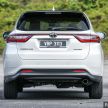
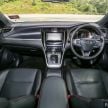
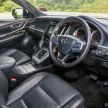
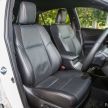

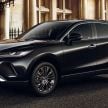

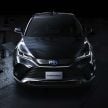
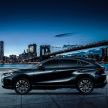
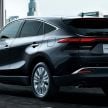
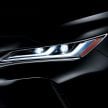

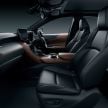
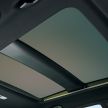
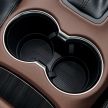




















Give up after 2 years of using TURBO. That shows how good Toyota was in building high-tech engines. Perhaps outsourced from BMW is better choice
Very handsome Game-Changing SUV! Every generation keeps getting sleeker and more elegant. I really hope nobody will compare this beauty with a cheap Proton X70, it is such a Game Over comparison.
MCO haven’t lifted and you already come back throwing your shit again eh?
Proton X70 all the way…
But tbh Harrier still looks nice
Boyue Pro still looks lightyears better in and out.
It is crazy to compare a premium world class Game-Changing SUV design to an unknown cheap Chinese SUV design. Boyue Pro should only be compared to Honda CR-V, Nissan X-Trail and Game-Changing Perodua Aruz
Even Harrier still looks light years better in and out too.
X70, Boyue Pro, X70 & this, all terrible and absolutely game over. I rather wait for game changer new facelift CR-V instead.
Harrier all on the way
Toyota & BMW all the way
CKD it in malaysia… sure laku one.
Every iteration, the price rise went from Toyota level to Lexus levels. Might as well buy the Lexus version if you can afford it.
The Harrier is neither here nor there as evident from the lack of presence from current generations of Harriers.
X70 berpisah tiada….
so against kancil turbo, who will win?
Obviously, this wins for sure with bigger cc and big engine
Lol u don’t get the joke.
hope they will assemble here locally so the price will be right
X70 assemble here locally, price konfem right too.
Is it right to compare a Toyota Harrier to a Proton/Geely X70, for starters they belong in different segments.
Harrier should compare to CX8 & Santa Fe. Even though, Harriet still looks pretty good
Drop on turbo is really a step back. I am wondering how this low power luxury model can fight with other competitor…
RAV 4 will be launch in Malaysia? It produce in Bukit Raja?
The power still there, 202PS with Dynamic Force Engine and Powerful Hybrid Engine Important is reliability that could run longer.
Front end overhangs too much, proportion looks weird for this FF SUV. Why they build the grill way forward like that? It will be hard to maneuver around tight corners.
I bought a 2005 EU30 and WOW what a great car for a 17 year old model. Sold my Fortuner 2019 and felt it is an up grad. Only 2 less, keyless and Android. Otherwise bay far batter in Power, Comfort and Luxury. Hook up a trailer bar and its my sport utility and meet my needs. Cant ask for a batter car